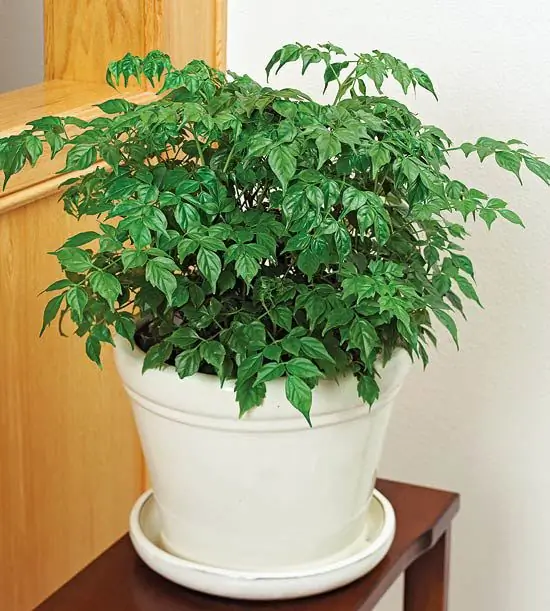Radermacher is a very elegant houseplant. Its shiny leaves with expressive veins and spiky cone-shaped tips are especially prominent in adult specimens. For connoisseurs of "greenery" it is a worthy flower for a home collection.

Only one indisputable factor, that the radermaker is tolerant of dry air in the house and does not need to be sprayed, makes the plant popular and unpretentious.
Content Radmakers
The plant prefers cool, not cold or moderately warm rooms, where there are no temperature fluctuations. The lighting needs to be bright, but the sun's rays should not burn the leaves.
A radmaker will not refuse to spend summer in a garden, a loggia, in a bright corner under a canopy. Its beautiful leaves must be protected from frost, both spring and autumn.
Caring for a radermacher
The care measures are not complicated. Water the plant sparingly, without swamping the soil in the pot, taking breaks between waterings. Watered with settled, not cold water. In winter, watering is reduced. Twice a month, the flower is fed with a complex fertilizer for deciduous plants. In winter, top dressing is permissible once every 1-1.5 months.
When the pot is torn apart by overgrown roots, the plant is transplanted into a container slightly larger than the previous one. The soil is used on the basis of peat with the addition of coarse sand or perlite.
Possible problems
If the stems of the plant stretch out and become thin and brittle, in the spring they are cut off, leaving a few centimeters from the base. Then the radermaker is fed. New leaves grow back pretty quickly. If not properly cared for, a whitefly, scale insect or mealybug can attack the radermaker.
With optimal care, the radermaker will become a long-liver in the house and will decorate any interior.






